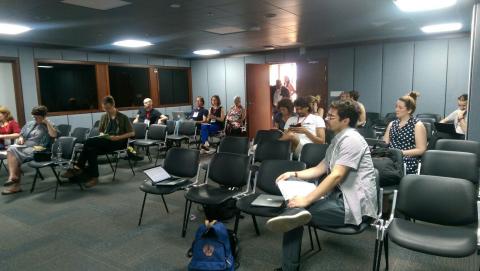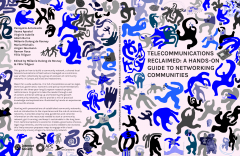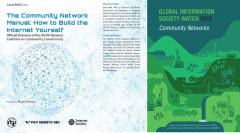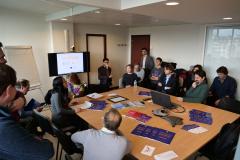IAMCR2017: Delving into the history and policy of Community Networks

In July, four netCommons members attended the annual conference of the International Association of Media and Communications Research in Cartagena, Columbia. During their panel entitled “Drawing Policy Lessons From the History of Alternative Media and Networks”, the team was able to present their first findings on the history and policy of alternative networks and reflect on contemporary stakes for Community Networks (CNs).
Maria Michalis from Westminster University opened the panel by looking at European broadband policy. Offering a historical account of the process of liberalisation of telecom infrastructure in Europe since the 1990s, she showed how after an initial period of pro-competitive policies, the current trend is one of concentration and “regulatory holidays” for incumbent players. In this context, she points out how little room there is for alternative models like Community Networks, which are only taken into account by policy-makers insofar as they can “fill the gaps” left by dominant players (see also deliverable 2.2).
Mélanie Dulong de Rosnay from CNRS then took the stage to show how CNs fit into her “peer-to-peer legal theory.” She focused on the deeply ingrained tensions between the law and communications technologies by starting with the example of pirate or alternative radio networks from the 1960s and 1970s. Mélanie shows how, during the early phase of technological deployment, technology may circumvent the law before being subject to normalization, or even repression. Against that fate, she puts forward the concept of “peer-to-peer law”, based on the belief that the commons can help rethink traditional legal frameworks built around individualistic categories. By doing so, she argues, we might be able to move towards more distributed and democratic models of legal regulation (read more about this in this and that publications).
In his talk, Dominique Trudel focused on “The Independents”, a heterogeneous group of local and regional cooperatives that emerged in the United States in the 1890s to challenge AT&T's monopoly over telephone networks. While doing so, these groups offered various local models for the appropriation of the new technology, turning the telephone into a popular medium. Soon, however, they would suffer AT&T's multi-layered retaliation and, by the end of the 1910s, the “Independent movement” whithered. As Dominique explains, one of the key strategy of AT&T's founder Theodore Vail then was to argue for an old common-law legal notion of “common carrier” to legitimise what was a privatised monopoly. The same notion of “common carrier” would again become central more than a century later in the American debate on Net neutrality, in which it is subject to ideological and a-historical analogies still to the benefit of incumbent telecom players (see for instance a recent article by historian Richard John).
Finally, Félix Tréguer delved into the history of alternative networks by looking at the first generation of Community Networks founded in the 1990s through two case-studies: one on French Data Network, a landline Internet Service Provider founded in 1992, the other on Consume.net, a WiFi-based wireless network built in London around 2000. While both networks confirm that CNs can emerge from diverse actors, with different motivations, political cultures as well as technical models and pricing schemes, they also show that these initiatives face two major challenges to ensure their sustainability: the articulation of the local and global scales in connectivity needs, and the need to build advocacy capabilities aimed at influencing regulatory developments (if you want to read more on the history of alternative networks, Dominique's and Félix's presentations were drawn from the netCommons deliverable 5.1).
Back from a great conference, the team intends to build on this work and move towards clear legal and policy guidelines for European Community Networks. That's the task ahead for the coming months!






